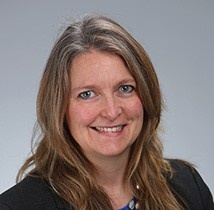Leslie Phillmore
Professor

Email: Leslie.Phillmore@dal.ca
Phone: (902) 494-2794
Fax: (902) 494-6585
Mailing Address:
- Learning
- Memory
- Songbirds
- Perception
- Neurogenesis
- Neuroplasticity
- Seasonality
Education
PDF (University of Western Ontario)
MA/PhD (Queens University)
BA (Huron College, University of Western Ontario)
Research Interests
Songbirds have considerable ãneural real estateã dedicated to the complex behaviours of song learning, perception, and production. We study perception and immediate-early gene response in perceptual regions, environmental factors that affect neurogenesis, and how stress affects song learning and brain development in male and female zebra finches.
Selected Publications
ã Phillmore LS, Klein RM. (2019). Theô puzzle of spontaneous alternation and inhibition of return: How they might fitô together. Hippocampus, 29, 762-770.
ã Roach SP, Mennill DJ, Phillmore LS.ô (2017). Operant discrimination of relative frequency ratios in black-capped chickadeeô song. Animal Cognition. 20(5): 961-973.
ãÂPhillmoreô LS,ô Fisk J, Falk S, Tsang CD. (2017).ô Songbirds as objective listeners: Zebra finches (Taeniopygia guttata) can discriminate infant-directed song andô speech in two languages.ô International Journal of Comparative Psychologyô Special Issue. 30
ã Phillmore LS,ô MacGillivrayô HL, Wilson KR, Martin, S.ô (2015). Effects of sex and seasonality on theô song control system and FoxP2 protein expression in black-capped chickadees (Poecileô atricapillus).ô Dev Neurobiol,ô 75, 203-216.
ãÂPhillmore LS, Veysey AS, Roach SP. (2011). Zenk expression in auditory region changes with breeding condition in male Black-capped chickadees (Poecile atricapillus). Behav Brain Res, 225, 464-472. [0]
ãÂPhillmore LS. (2008). Discrimination: from behaviour to brain. Behav Process, 77, 285-297. [3]
Awards and Honours
Professor of the Year in Neuroscience (awarded by the Undergraduate Neuroscience Society)
